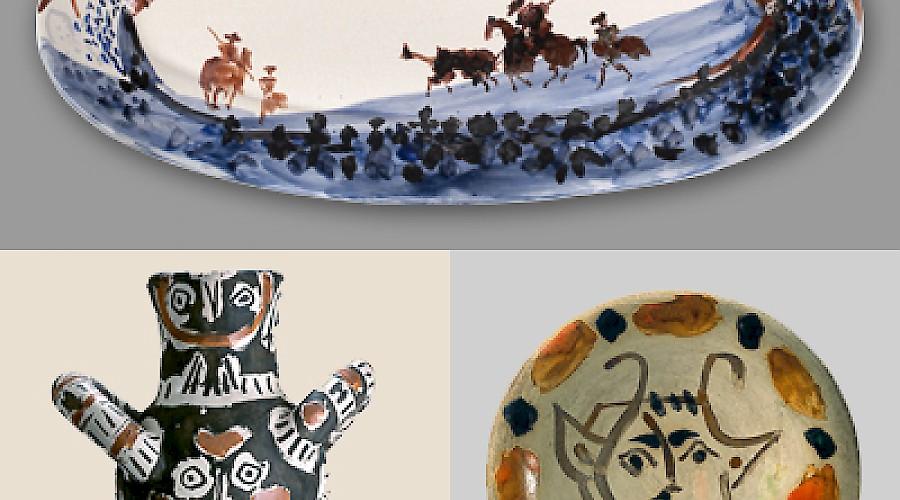Iberian Suite – Picasso Ceramist and the Mediterranean

A selection of more than 150 of Pablo Picasso’s ceramic pieces that reveal how the prolific artist reshaped the notions of clay in the arts.
Picasso Ceramist and the Mediterranean is a carefully curated selection of more than 140 of Pablo Picasso’s ceramic pieces that reveal how the prolific artist reshaped the very notions of how clay could be used. Reflecting the artist’s strong attraction to Mediterranean colors, shapes, and mythological creatures, the exhibition is the first of its kind to be shown in the United States.
During Picasso’s long career, he explored many forms of visual art: painting, sculpture, lithography, etching, collage, stage and costume design, poetry, and ceramics. He initially experimented with clay in 1900, but it was during the years after World War II that he developed an intense interest in the medium. At the time, he lived in southern France, where clay deposits had been exploited since pre-Roman times. During his lifetime, he produced some 4,500 plates, vessels, and other ceramic creations.
This exhibition was originally conceived for Marseille-Provence 2013, the yearlong celebration of Marseille’s reign as Cultural Capital of Europe and presented in Aubagne. In 2014, the exhibition traveled to the National Museum of Ceramics in Sèvres, near Paris, where it was the most successful show in the museum’s history. Curated by Joséphine Matamoros and Bruno Gaudichon.
Presented as part of the Kennedy Center's International Festival IBERIAN SUITE: global arts remix.